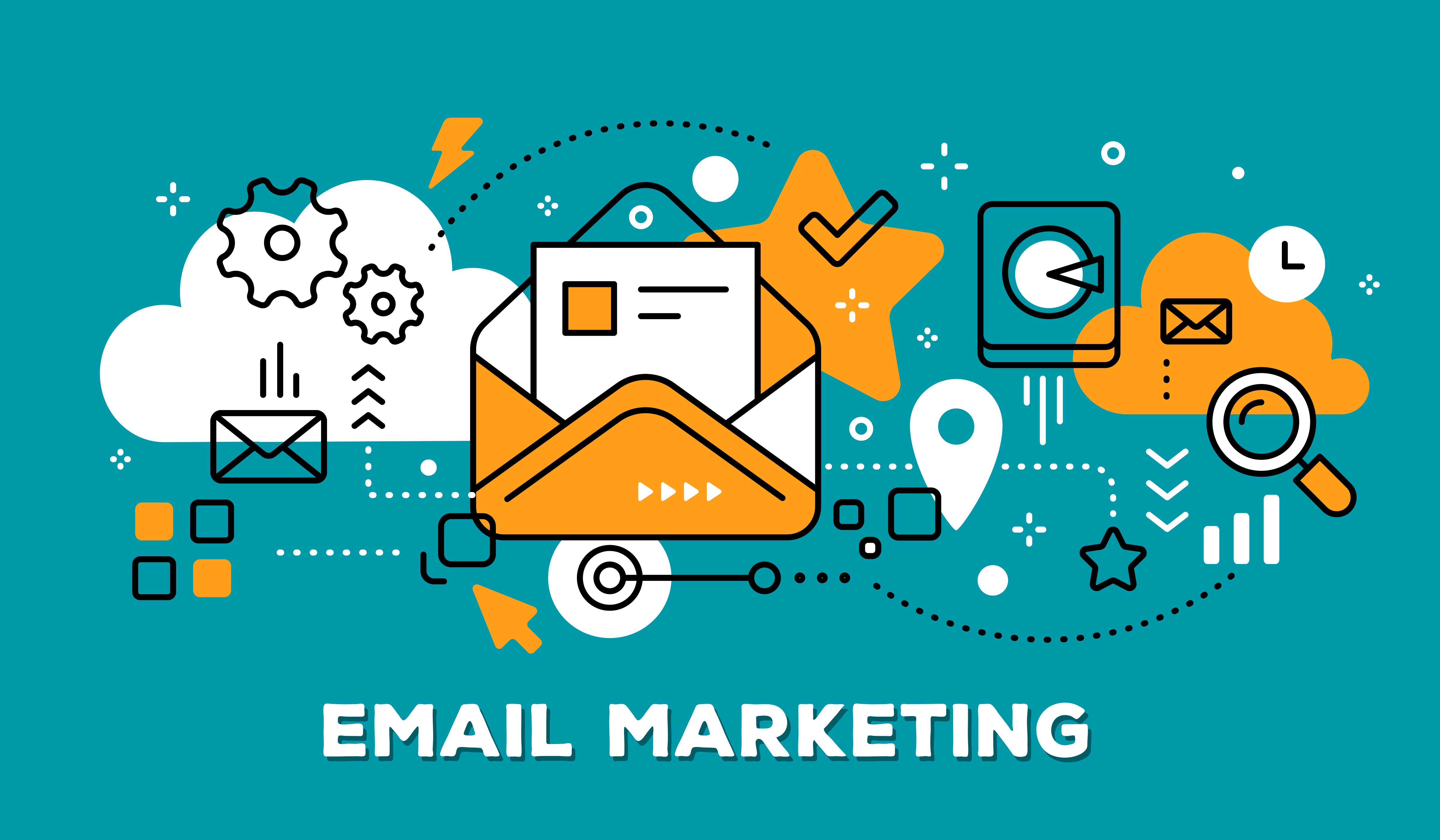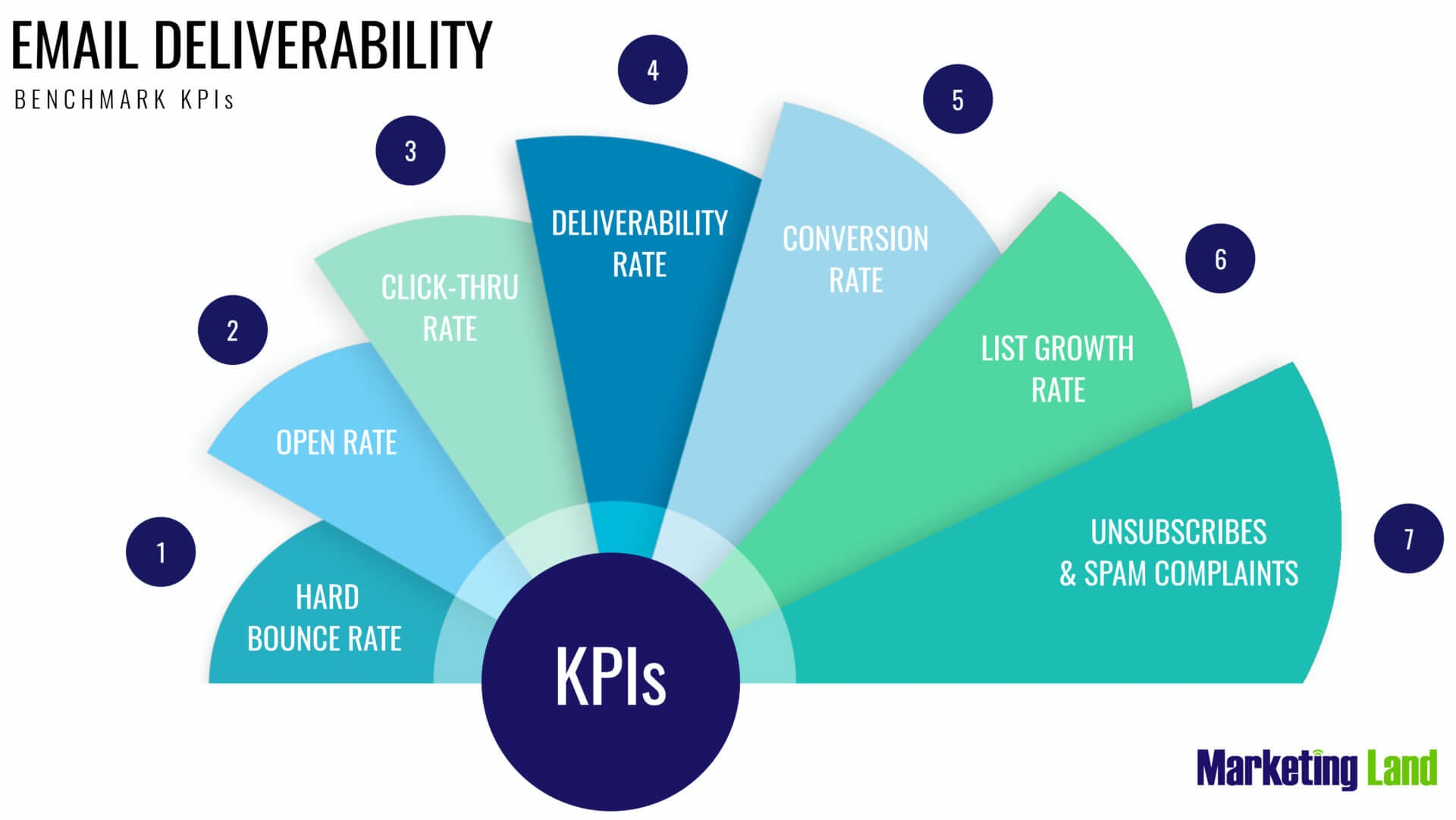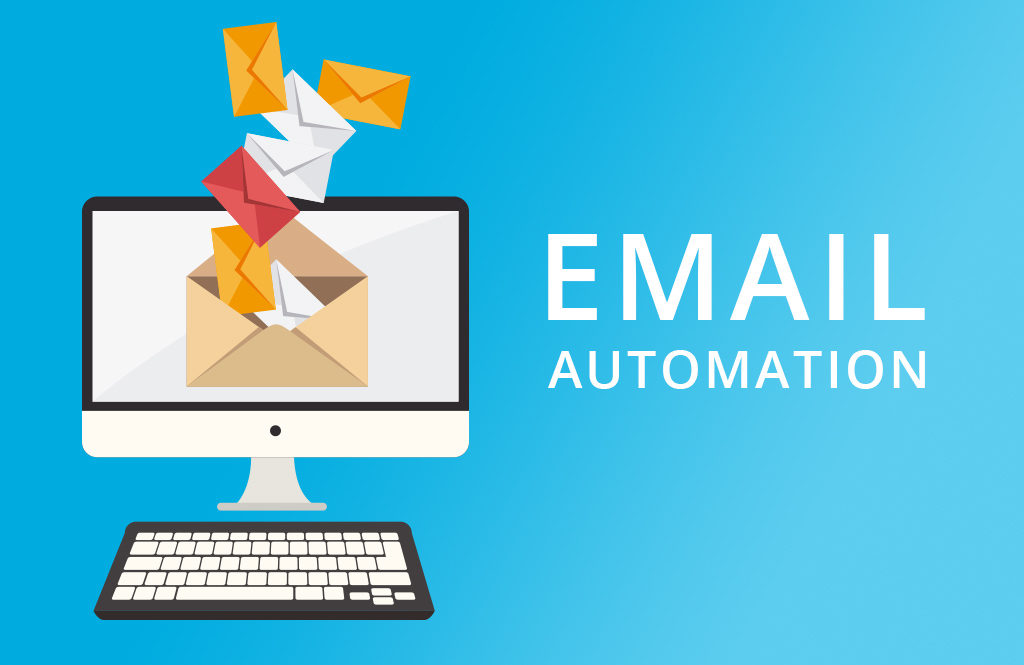Introduction of Email marketing

Email marketing is a great way to engage and get rich quickly in email marketing. Email marketing is still a crucial strategy for all types of business organizations even in the present era of digitization. It would be right to say that nothing brings up prospects and creates brand loyalty like a well-crafted email. This article will show several ways by which the engagement rate can be improved using emails for commercial purposes.
Section 2: Compelling Email Content Strategies

**Email advertising** thrives on content. Create compelling content that will help you connect with your readers. Here’s how:
Know Your Audience: Customize your writing so it appeals to their target market; conduct extensive research to understand their needs, wants and fears.
Add Value: Give subscribers something useful about their interests or the challenges they may have faced, as well as relevant offerings or informative articles contained in each mail.
Create Eye-Catching Subject Lines: The subject line you put up there is the first thing your recipients see. Lure them into opening your emails through persuasive language, personalization and curiosity.
Mobile Optimization: Ensure that your content looks good on small screens because most openings are done on mobiles. Responsive design can help with this while concise formatting can improve readability respectively.
Use Visuals Well: Use attractive images, videos or graphics that go along with the text. Effective messages use more beautiful visuals than plain words do alone.
Maintain Consistency: Maintain uniformity in tone; style; frequency; etc., throughout all company email communications. This uniformity builds trust and reinforces brand image in customers’ minds respectively.
Thus, this way you will create powerful email content pieces that resonate with your target audience thereby leading to the success of your email marketing campaigns.
Section 3: How to Build an Engaged Subscriber List

1 For **your electronic mail advertising** efforts to bear fruit, one has to build an engaged subscriber list. Underneath are several ways to grow your list effectively:
Use Opt-in Forms: You can have opt-in forms put strategically on your website, blogs and social media that will make people sign up for your email list. This is done through offering discounts on items or special offers.
2 Segment Your Audience: Segment the subscribers based on demographics, interests, or purchase behaviour. Moreover sending focused and personalized emails improves engagement rates hence converting more leads to sales.
3Create Irresistible Lead Magnets: Make lead magnets like e-books; white papers; and free courses that provide value in exchange for their email addresses. These must be related to their interests and should yield tangible benefits to them.
4 Social Proof Utilization: Use testimonials, reviews or even show the number of followers you have on social media as a way of establishing trust with potential subscribers. By doing this, people will easily believe that they are making the right choice when joining your email lists.
Encourage Forwarding and Sharing: Include sharing buttons and “Forward to a Friend” links in your emails so that recipients can extend this information beyond the inbox. By recommendation from mouth, an individual can develop his/her subscriber base naturally.
5.**Share exclusive content:** Offer some exceptional content such as a trailer or sneak peek of a product/offering only for Subscribers. This is because exclusive loyalty programs build stronger bonds between these customers and the company thereby motivating them to engage in all brand-affiliated activities.
- **Exclusive Content Offer:** Give away exclusive content such as previews or early access products and deals to subscribers so that your clients can remain loyal to all of the brand-related activities you have.
7.**Maintain a Clean Email List regularly**: To keep it clean, remove non-responsive subscribers and those who have unsubscribed from your list regularly to reach engaged recipients and maintain its cleanliness.
Section 4: Optimizing Email Deliverability and Open Rates

Delivering emails into subscribers’ inboxes and making sure they are opened for an effective email marketing campaign. This is how email deliverability and open rates can be optimized:
- **Keep Your Email List Clean:** Otherwise, high bounce rates could damage both a sender’s reputation as well as deliverability because of spam complaints so ensure inactive/invalid email addresses are expelled from your list periodically.
- **Employ Double Opt-In:** Make a double opt-in process which ensures any subscribing address is confirmed with the owner’s consent for receiving such emails from you thus helping you avoid spam complaints hence getting better quality subscribers.
- **Avoid Spam Triggers:** Ensure that your email content uses no terms that might make filters identify them as spam through slang, more punctuation marks or tease subject lines.
- **Authenticate Your Domain:** Authenticate your domain using SPF, DKIM, and DMARC protocols establishing trustworthiness with internet service providers (ISPs) thus improving the possibilities of being delivered into the recipient’s inbox.
- **Optimize Email Timing:** Consider different send times/days of the week to determine when your readers are most active in engaging with your emails. Testing behavioural patterns within certain audiences should also take into account time zones for optimal timing.
- **Appealing Subject Line Creation:** You may design an attractive restatement that will force whoever reads it to open up your write-up. Curiosity, personalization, and concentration on linings will boost open rates.
- **Segment and Organize Emails:** Sort out your email list according to demographics, interests or degree of participation to send unique and relevant content to every section. In case you send more specific emails that are oriented towards what recipients are interested in, they stand higher chances of being opened and engaged with.
- **Track and Analyze Performance:** Use data analytics tools to track your email deliverability rates constantly as well as open rates then apply this data for future trends analysis purposes plus strategy optimization thus continually improving performance.
Implementing these strategies will help you optimize your **email marketing** to ensure delivery of targeted emails that are opened and engaged with towards achieving better campaign results.
Section 5: Leveraging Personalization and Segmentation Techniques

For effective **email marketing**, personalization and segmentation are two powerful tools available in its arsenal. These techniques should be employed as follows:
- **Collect Relevant Data:** Record their preferences and demographic details like previous purchases on sites or sign-up forms tracking who took what action at which part in time through interactions on websites or sign-up forms or any other demographic information relating to your target audience.
- **Divide Your Market**: Segmentation is where a mailing list is broken down into groups based on commonalities such as purchasing history, engagement levels, etc so that different parts of segmentation can receive specific content thereby boosting their engagement levels and conversion potential.
- **Use Dynamic Content:** Use dynamic blocks in your emails so that the message can change based on what a recipient prefers or has done before; these may include product recommendations, individualized offers as well as messages tailored around specific demographic groups.
- **Personalize Email Subject Lines and Salutations:** Incorporate the subscriber’s first name into the subject line and salutation, which should be more personalized and welcoming. According to studies, this has been shown to increase open rates significantly.
- **Send Behavior-Based Triggered Emails:** Make emails act as automatic follow-ups when subscribers do some things like visiting a website, abandoning their carts or opening email letters from you. This could be facilitated by using triggered emails that provide relevant content for every person’s actions thus enhancing increased interaction and sales.
- **Tailor Content to Each Segment:** Make sure that the content of your email messages reflects the preferences, tastes and interests of separate segments. It might mean either promoting recently purchased items they have put a lot of love into or giving them exactly what they need at this point.
- **Test and Iterate:** Continuously test various personalization approaches or satisfy segmentation strategies that are best liked by your audience with analytics data accessible after an A/B test results analysis for better performance over time.
- **Respect Privacy and Consent:** Follow privacy laws such as GDPR or CCPA while collecting subscribers’ information so as not to violate any boundaries when one asks respondents about their information personally; Also show respect towards individual preferences instead of opting out completely from all further communications with them.
Therefore, through the effective application of personalization and segmentation techniques, an email marketing campaign becomes more meaningful and captivating which in turn resonates well with viewers leading to improved outcomes on your side.
**Section 6: Rolling out Effective Call-to-Action Strategies**

Just having a good call to action (CTA) in emails is not enough and the following are some of how it can be implemented:
- **Be Clear and Direct:** The tones used when establishing the CTA must be as plain as possible and shorter than longer.
- **Create a Sense of Urgency:** For instance, limited-time promotions may help encourage some subscribers to take immediate action. Such promotions make subscribers act because they are driven by urgency.
- **Highlight Benefits:** Make it clear what the readers will gain by taking the required action including saving money, gaining access to exclusive content, solving a problem etc.
- **Use Compelling Visuals:** Employ visually appealing buttons or banners to make your CTA more eye-catching. Eye-catchy CTAs employ as well bold fonts, different contrasting colours plus eye-catching graphics among others.
- **Place CTAs Strategically:** Place your CTA at the top of your email where it is easy to see them and click on them. Above-and-below-the-fold placements might satisfy diverse reading preferences.
- **Personalize CTAs:** Based on recipients’ interests, behaviour or demographic information personalized calls-to-action have shown an increase in click-through rates as well as conversions because they had done this before.
- **Test Different Variations:** However, A/B test results can help identify the most effective ones for optimization thereafter. However, you can analyze A/B test results to identify the most effective ones for optimization thereafter.
- **Track and Analyze Performance:** Thus you can measure how good are their strategies by tracking metrics such as click-through rate (CTR), conversion rate etc through email analytics data before optimizing those statistics with actionable insights obtained from them later on. Thus you can measure how good are their strategies by tracking metrics such as click-through rate (CTR), conversion rate etc through email analytics data before optimizing those statistics with actionable insights obtained from them later on
Through this, the **email marketing** based campaigns conducted by you can have a greater impact and make your subscribers do what you want them to.
**Section 7: Analyzing Email Marketing Metrics for Success**

Analyzing email marketing metrics is important as it helps in determining how well the campaigns are doing hence informed decisions based on improvement. The following are ways of evaluating key metrics for success:
- **Open Rate**: What percentage of recipients open your email? This high opening rate may imply that your subject line and sender name were catchy while a low suggests optimization might be necessary.
- **Click-Through Rate (CTR)**: How many people clicked on a link in your email or responded to a CTA included in the message? Higher CTRs indicate engaging content and relevant CTAs.
- **Conversion Rate:** Conversion rate measures the proportion of people that completed an action such as purchasing after clicking on a link in an email message sent by one person to another. conversions have increased through this campaign whenever conversion rates are higher.
- **Bounce Rate:** How many e-mails were not delivered due to invalid addresses or other delivery issues? High bounce rates indicate the need for list cleaning or improvement in deliverability.
- **Unsubscribe Rate**: The unsubscribe rate shows how many recipients left your mailing list after receiving a particular mailshot.
High unsubscribed rates may mean that either the frequency of emails does not agree with readers or its content does not resonate with the recipient’s mindsets.
6.**Email Sharing/Forwarding Rate**: This ratio shows the proportion of persons who received an email and then, sent it to others.
A high sharing rate implies that information is valuable and should be shared with other people so that it reaches more audiences in different places.
7.**Revenue Generated:** Revenue generated directly from email campaign sales, as well as earnings due to email interactions, will also need to be tracked.
This metric helps you understand how much your marketing activity has contributed to the revenue earned during a specific duration.
8.**List Growth Rate**: How fast is your list growing over time? A healthy list growth rate indicates high opt-in strategies and lead generation aimed at attracting new subscribers.
9.**Engagement Metrics**: These can be found from data such as time spent reading emails, the number of clicks per email and interaction with embedded media like videos and images.
These measures indicate how much the recipients got involved in the email content through their activities on them
Analyzing these email marketing metrics regularly will help you identify where your campaigns have strong or weak points, optimize your strategies for better results and get more out of your email marketing efforts in terms of success than ever before!
Section 8: Navigating Email Marketing Compliance and Regulations

This zone primarily involves building trust among subscribers while preventing legal problems—put simply, navigating email marketing compliance and regulations. Here’s how to ensure compliance:
- **Understanding GDPR and CCPA:** Understand the General Data Protection Regulation (GDPR) by the European Union or the California Consumer Privacy Act (CCPA) by the United States. Accordingly, these govern all personal data used in emails which are circulated across all platforms for collection, processing storage etc
- **Obtaining Consent:** An individual must only be included on your mailing list if he/she has given unambiguous permission.
That is why a double opt-in process confirming subscriber consent needs to be carried out so they have a clear understanding of how their details will be utilized.
- **Unsubscribe Options:** Every email you send should contain an unsubscribe link. You must comply with unsubscribe requests in line with statutes and based on what receivers prefer.
- **Data Security:** Subscriber data can be secured by using encryption, having proper storage methods as well as undergoing regular security audits while at the same time ensuring that third-party email marketing platforms have secure mechanisms.
- **Avoid Deception:** Avoid perpetrating deceitful practices in your emails like false promises, misleading headlines or hidden unsubscribe links. Always be open and honest in your communication with subscribers
6.**Company Details**: Each email should include precise company contact information such as a physical address for the company or contact e-mail addresses which reflect your honesty unto your audience and also to satisfy other legal duties that may arise
- TRANSACTIONAL EMAILS VS PROMOTIONAL EMAILS: HOW ARE THEY DIFFERENT IN TERMS OF CONTENT RULES? However, some of the legal provisions on email marketing might not apply to transactional messages although data protection requirements should still be considered.
- BEING UPDATED WITH CHANGES IN LAW: Always keep yourself informed about updates that take place regarding Email Marketing Laws & Regulations and periodically adhere to industry guidelines for compliance purposes.
- GETTING LEGAL ADVICE WHEN NECESSARY: When there are concerns about specific rules governing e-mail marketing operations and their legality, consult professionals who specialize either in Data Protection or E-Mail Marketing legislation issues themselves.
In conclusion, navigating carefully through mailing regulations can keep the privacy of subscribers alive thereby creating a platform for better sustainable email campaigns and earning trust from the audience in them.
SECTION 9: IMPLEMENTING ADVANCED EMAIL MARKETING AUTOMATION TECHNOLOGIES

Using these more advanced technologies, you can now make your strategies faster and work better for you during campaigns while increasing engagement opportunities among your target audiences; here’s how it works:
- PERSONALIZATION AND SEGMENTATION: Develop personalized email campaigns based on such complex segmentation as past purchase behaviours, web page interactions demographics etc. Automated tools come in handy if one intends to send the right information at the right time for an enhanced customer brand experience.
- DRIP MAILINGS: Create a sequence of emails that will be automatically sent out over a few days or weeks within the drip campaign approach to your subscriber list. These types of individualized messages help subscribers through each stage they take during their progress towards purchasing thereby being useful in lead nurturing, product launches, re-engagement with dormant customers etc.
- TRIGGERS BASED ON BEHAVIOR: Configure automated triggers based on activities performed by subscribers including opening an email, clicking on a link in an email or visiting the company’s site. This kind of email have additional offers such as special discounts and personalized offers when connected to a well-constructed rules system making them attractive.
- EMPOWER YOUR CONTENT: Embed dynamic content blocks within your messages allowing you to personalize content based on recipient data or actions they have taken earlier. With automation software solutions, marketers can create real-time customized messages resulting in higher interaction rates among receivers since every contact has his copy.
- RETRIEVE ABANDONED CARTS: Set up automated abandoned cart recovery emails that remind customers who abandon their carts without completing any purchases about these abandoned merchandise left unattended by them. Besides, such reminders are usually combined with recommendations of similar products as well as discounts provided by e-commerce stores to recover the loss of sales from abandoned orders.
- SCORING AND QUALIFYING LEADS: This means creating mechanisms for scoring leads based on their email interaction and website visits to identify their interest levels them. Then, automation tools will help prioritize leads by engagement level and readiness to purchase; this enables your sales team to concentrate only on highly qualified leads.
- **Automated A/B Testing:** These automation platforms also include automated A/B testing across various elements like email content, subject lines, and CTAs for optimizing your campaigns to achieve maximum efficiency. The absence of the need to do it manually saves both time as well as financial resources especially when using this resource.
- **Integration with CRM Systems:** To be able to accomplish customer-related tasks, the email marketing automation platform should fully integrate with the customer relationship management (CRM) system. These automation tools ensure seamless data sharing, and lead nurturing workflows resulting in increased overall effectiveness and collaboration.
Such advanced techniques in email marketing automation can enable businesses to scale up their campaigns better targeted at personalization resulting in better results.
To sum up, understanding the intricacies of e-marketing is crucial in contemporary business setups. Employing personalized segmentation and automation can create more intimate relationships with your audience that leads to engagement and results. Don’t forget that trust develops when organizations follow legal compliance policies. This is the route that expanded the revenue base of this company at an exponential rate.



